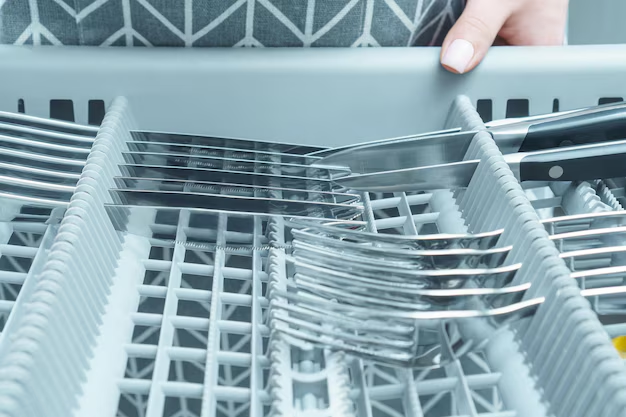Easily Change the Air Filter in Your LG Refrigerator: A Step-by-Step Guide
Fresh, clean-tasting air is a hallmark of a well-maintained refrigerator. Maintaining this freshness involves, among other things, regularly changing your refrigerator's air filter. If you're the proud owner of an LG refrigerator, you may wonder how best to approach this task. Follow along, and by the end, you’ll have all the tools and knowledge needed to change your air filter without a hitch.
Why Changing the Air Filter Matters
Before diving into the how-to, let's understand why air filters are essential. The air filter in your refrigerator helps remove odors from the circulating air, ensuring your food stays fresh and odor-free. Over time, these filters can get clogged, affecting performance and sometimes even causing unpleasant odors. Changing them regularly ensures optimal efficiency and the longevity of your appliance.
How Often Should You Change It?
Manufacturers typically recommend changing your air filter every six months. However, this can vary based on usage patterns and specific model recommendations, so it's always a good idea to consult your user manual for precise guidance.
Tools and Preparations
Before starting, gather a few simple materials:
- Replacement Air Filter: Ensure compatibility with your specific LG refrigerator model.
- Soft Cloth: For cleaning the surrounding area.
With materials in hand, you’re ready to get started.
Step-by-Step Guide to Changing the Air Filter
Step 1: Locate the Air Filter
The air filter in most LG refrigerators is situated inside the fridge compartment and can often be found attached to the ceiling or center section. In some models, it’s cleverly concealed behind a small panel. Keep an eye out for the distinctive round shape of the filter cover.
Step 2: Remove the Old Filter
- Open the Filter Cover: Twist the filter cover gently counterclockwise to open it.
- Remove the Old Filter: Pull the old filter straight out.
Pro Tip: Place a towel or cloth underneath to catch any falling debris.
Step 3: Install the New Filter
- Prepare the New Filter: Unpack the new air filter.
- Insert the New Filter: Align it with the filter holder and push it into place until it clicks. Ensure that it’s seated securely.
- Close the Filter Cover: Twist it clockwise until snug.
Step 4: Reset the Filter Indicator
Most LG refrigerators come equipped with a filter indicator that reminds you to change the filter. After replacing the filter, it's crucial to reset this indicator. Typically, holding the air filter button for a few seconds will do the trick. This may vary by model, so checking your user manual is advised.
Maintenance Tips for Optimal Refrigerator Performance
Beyond changing the air filter, consider these additional maintenance practices:
Regular Cleaning
- Interior: Clean shelves and drawers with warm, soapy water regularly to prevent mold and bacteria growth.
- Exterior: Wipe down doors and handles to keep your appliance looking pristine.
Temperature Checks
Ensure your refrigerator is operating at the right temperatures: around 37°F (3°C) for the fridge and 0°F (-18°C) for the freezer. This helps maintain food safety and energy efficiency.
Seal Inspection
Examine door seals for wear and tear. A proper seal ensures energy efficiency and optimal cooling performance. Replace any damaged seals promptly.
Understanding the Air Filter's Role in Maintaining Freshness
The air filter works alongside activated carbon or similar materials to trap and neutralize odors. It ensures that air circulating within the fridge doesn’t carry smells that may compromise your food's flavor. Maintaining this component means you can trust the freshness of your stored goods.
Common Questions About Refrigerator Air Filters
Do All Refrigerators Have Air Filters?
Not all refrigerators have air filters. It often depends on the make and model. If your refrigerator doesn't have one, ensuring proper ventilation and routinely cleaning is still essential.
Can I Wash and Reuse My Air Filter?
Air filters for LG refrigerators are meant to be disposable. Cleaning them may not restore efficacy and could lead to poor performance or contamination.
What Happens If I Don't Change the Air Filter Regularly?
Skipping filter changes can lead to unpleasant odors, decreased efficiency, and in some cases, increased energy consumption as the fridge works harder to circulate air.
Benefits Beyond Freshness
While maintaining odor control is a primary benefit, a fresh filter can contribute to better air circulation and more consistent cooling across the fridge, indirectly supporting improved energy performance.
Summary of Key Steps 📝
Here’s a quick recap of the air filter change process to keep your LG refrigerator running its best:
- Locate the air filter.
- Remove the old filter, twist counterclockwise.
- Install the new filter, press in until it clicks.
- Reset the filter indicator.
🌟 Pro Tip: Remember this process every six months or as recommended in your user manual to maintain peak fridge performance.
Final Takeaway
Changing your LG refrigerator's air filter is a simple but impactful maintenance task that enhances your appliance's efficacy. By investing a few minutes every six months in this routine, you ensure longevity and reliability from your refrigerator, keeping your food at its freshest.
The next time you open your fridge door, breathe easy, and enjoy the freshness knowing your refrigerator is filtered to perfection.
